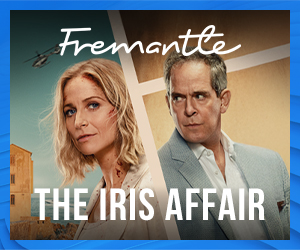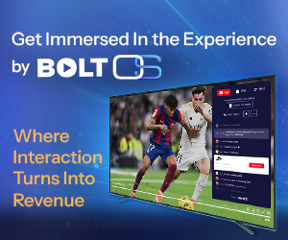
Sonia Fleck, chief
executive officer of Bomanbridge Media,talks about surfacing content,
improving discoverability, YouTube, IP and rights, Asia's acquisition habits,
monetising kids content and what the biggest influences in 2020...
Discoverability is as much an issue among kids programmers as among any other
genre in the streaming universe. Do you have a preferred strategy for surfacing
content?
"I am still
a believer that we can be agnostic and work across all media platforms. We’ve seen arguments that launching kids content on Youtube first is the best
way, others feel L&M release first is a better lead into media content. Our
preferred strategy varies according to the project as ‘one size’ simply does
not fit all in the kids arena. Be that as it may, what is clear is that a
very articulate and highly developed strategy needs to be established,
including thoughtful in depth narrative, third party digital and CP
creatives. I find many producers don’t really put enough gusto into that
original pitch."
Is there
anything you wish platforms would do to improve discoverability?
"I wish we
could more commonly have a balanced discussion with our broadcasting and
streaming partners to create a refreshed methodology on overall marketing.
These important partners remain constrained in allowing a democratization on a
wider number of social media services which could simply further promote the
shows. I also think producers really would consider a more incentivizing
% of back end on CP with truly committed platforms if they gave more calculated
out of the box approaches to the promotion. The idea of brand “control”
and “ownership” needs to change in a fluid digital landscape. Many producers
feel they have to do far too much. What was once a creative vocation has
become a “think for everyone” multi hat job profile."
If kids, as is commonly
thought, live mostly on YouTube, what’s your approach to streaming video? Do
you have a YouTube-first policy?
"YouTube is
a real cornerstone for children and parents’ easy program access, and it is not
to be ignored, but I do not always necessarily feel the long form series need
to be on youtube. Thoughtfully created shoulder and short form content
can just as easily...
Sonia Fleck, chief
executive officer of Bomanbridge Media,talks about surfacing content,
improving discoverability, YouTube, IP and rights, Asia's acquisition habits,
monetising kids content and what the biggest influences in 2020...
Discoverability is as much an issue among kids programmers as among any other
genre in the streaming universe. Do you have a preferred strategy for surfacing
content?
"I am still
a believer that we can be agnostic and work across all media platforms. We’ve seen arguments that launching kids content on Youtube first is the best
way, others feel L&M release first is a better lead into media content. Our
preferred strategy varies according to the project as ‘one size’ simply does
not fit all in the kids arena. Be that as it may, what is clear is that a
very articulate and highly developed strategy needs to be established,
including thoughtful in depth narrative, third party digital and CP
creatives. I find many producers don’t really put enough gusto into that
original pitch."
Is there
anything you wish platforms would do to improve discoverability?
"I wish we
could more commonly have a balanced discussion with our broadcasting and
streaming partners to create a refreshed methodology on overall marketing.
These important partners remain constrained in allowing a democratization on a
wider number of social media services which could simply further promote the
shows. I also think producers really would consider a more incentivizing
% of back end on CP with truly committed platforms if they gave more calculated
out of the box approaches to the promotion. The idea of brand “control”
and “ownership” needs to change in a fluid digital landscape. Many producers
feel they have to do far too much. What was once a creative vocation has
become a “think for everyone” multi hat job profile."
If kids, as is commonly
thought, live mostly on YouTube, what’s your approach to streaming video? Do
you have a YouTube-first policy?
"YouTube is
a real cornerstone for children and parents’ easy program access, and it is not
to be ignored, but I do not always necessarily feel the long form series need
to be on youtube. Thoughtfully created shoulder and short form content
can just as easily give the extension visibility the brands need to get
started. Depending on uptake, we then can decide where to go from there."
Are you seeing
any significant changes in the way kids buyers are acquiring content in/for
Asia?
"Yes, with
the level of pressure for broadcasters to create local IP, I have found many
terrestrials have all but moved their kids slots onto their DTT channels, which
have a much lower viewership. For those slots which remain on key FTV’s,
their slots are reduced and for the most part, they are all airing the same top
10 programs. It is incredibly difficult to get on the schedule if you are
not in the ‘Top10 Club’."
Did monetising
kids content in Asia become more difficult in 2019? Why?
"We have been
very successful, but we carry a powerhouse of tried and proven brands, from
Oddbods, to Care Bears as well as our Japanese anime Inazuma Eleven and Yokai
Watch have done amazingly. Bomanbridge makes a point to provide very
competitive programmes."
Do you think it
will become easier to monetise kids content in 2020?
"It’s not
clear as YouTube is changing the monetisation policy and I know this will hurt
many IP owners. Broadcasters also became more comfortable with sharing those
windows with YouTube as the revenues ultimately helped the franchise production
budgets. There will be again a chaotic truth and tell on where funding will
come from for these brands moving forward."
What do you
think will have the biggest influence on kids programming (production and
distribution) in Asia in 2020?
"Good Co
Productions, as well as the 2.0 era on social media platforms, (ie. TikTok,
YouTube, etc) and how their role will enter into the entire kids strategy
approach. For distribution, we are seeing again volume deals for our OTT
streaming platforms, which allows a second and or third cycle to programs which
have already had their television windows."
What industry
sector in Asia acquires the most from you (free-TV, pay-TV, streaming, other)?
"I am proud to
say we carry many significant franchises and are therefore still landing a
large number of key children’s channels, whether the #1 player be free TV or pay TV."
How have rights
negotiations for kids content changed in the past year or so?
"One thing that
I have found to be less satisfactory is that many of the localised by territory
OTT platforms seem to take less of a curated approach and more of a standard
commercial term approach on the per title significance, privileging volume and
a basic price per hour. It’s a bit painful when we see so many of our
high value titles be requested and thrown into a “number of hours” that need to
be fulfilled. I recognise that the streaming OTTs need volume indeed, but
as kids programs often bring more to the table in terms of the experience ( ie.
CP and other online offerings), I am still struggling with the feeling that
sometimes the shows aren’t getting the special consideration and leverage
deserved."
How critical is
licensing and merchandising to your business in Asia? Will this change in
2020?
"It is not yet
critical in that most of our revenue is still based on distribution, however we
have and will continue to invest into IP where we have a share in CP. L&M
revenue extension is a major priority for us moving forward. This said, we do
not want to be the company that pitches to global players a toy first, leaving
behind the valuable narrative which expresses our creative commitment."
Excerpts of this interview were published in ContentAsia's print magazine for the ATF 2019





























